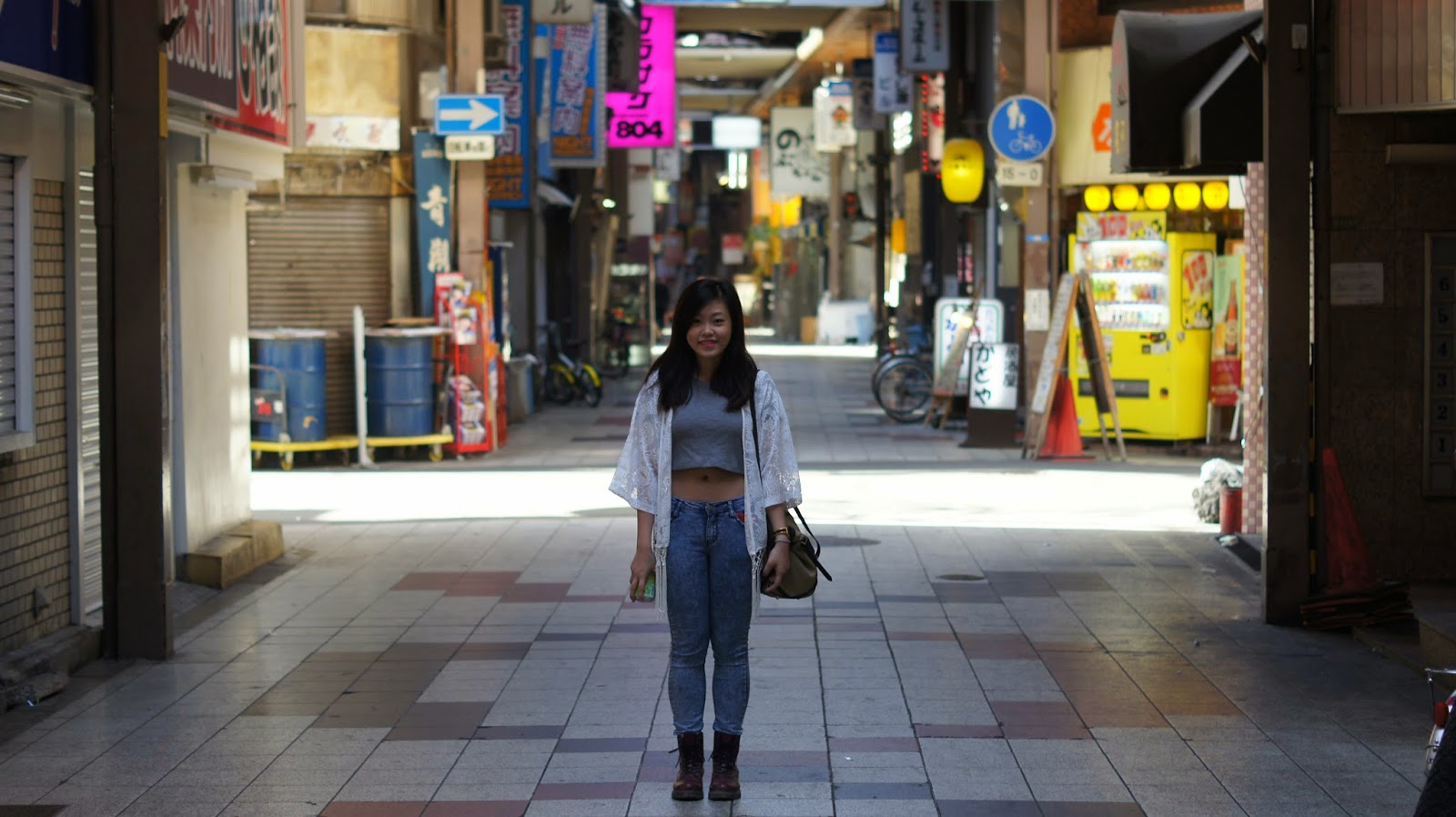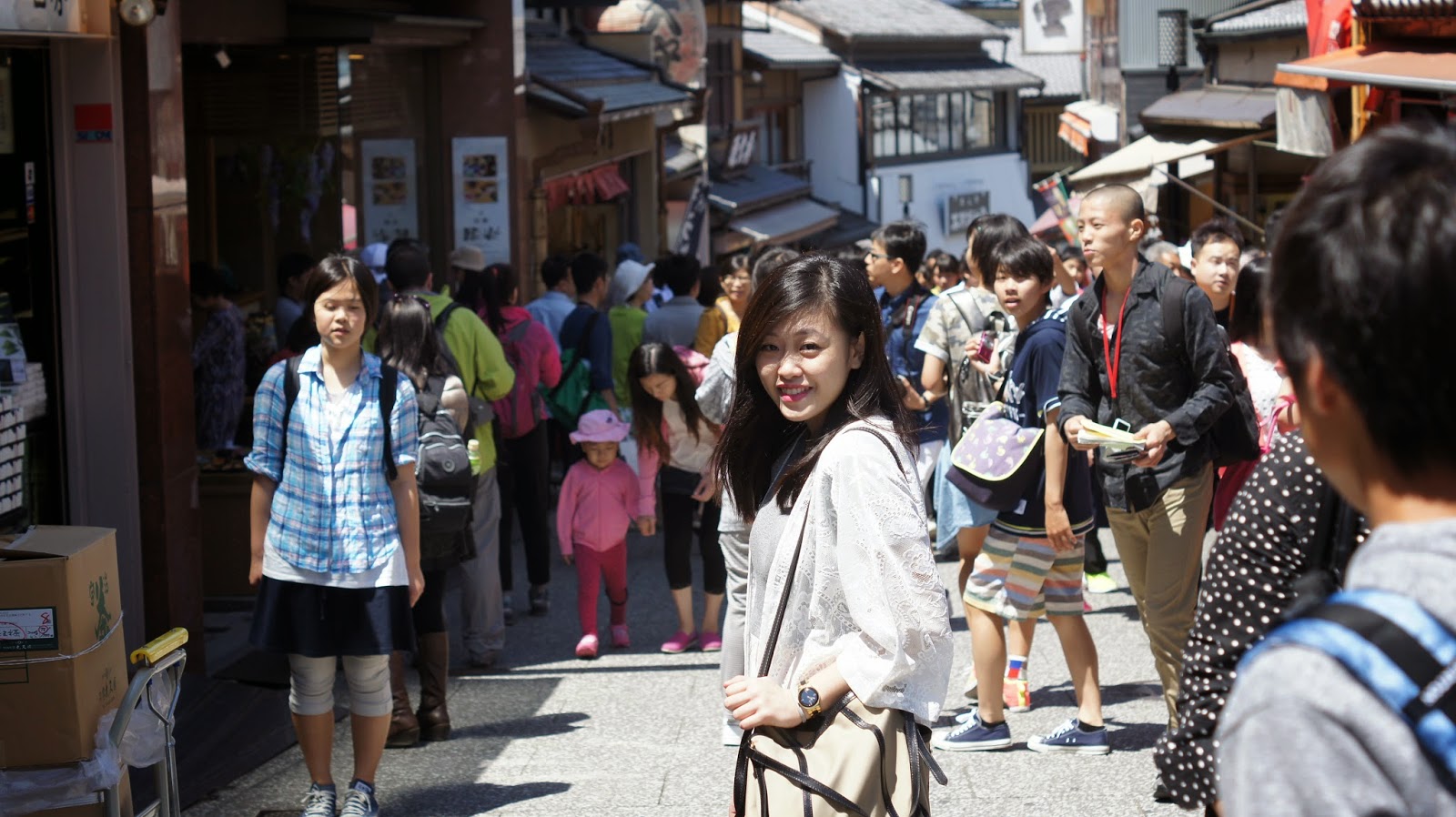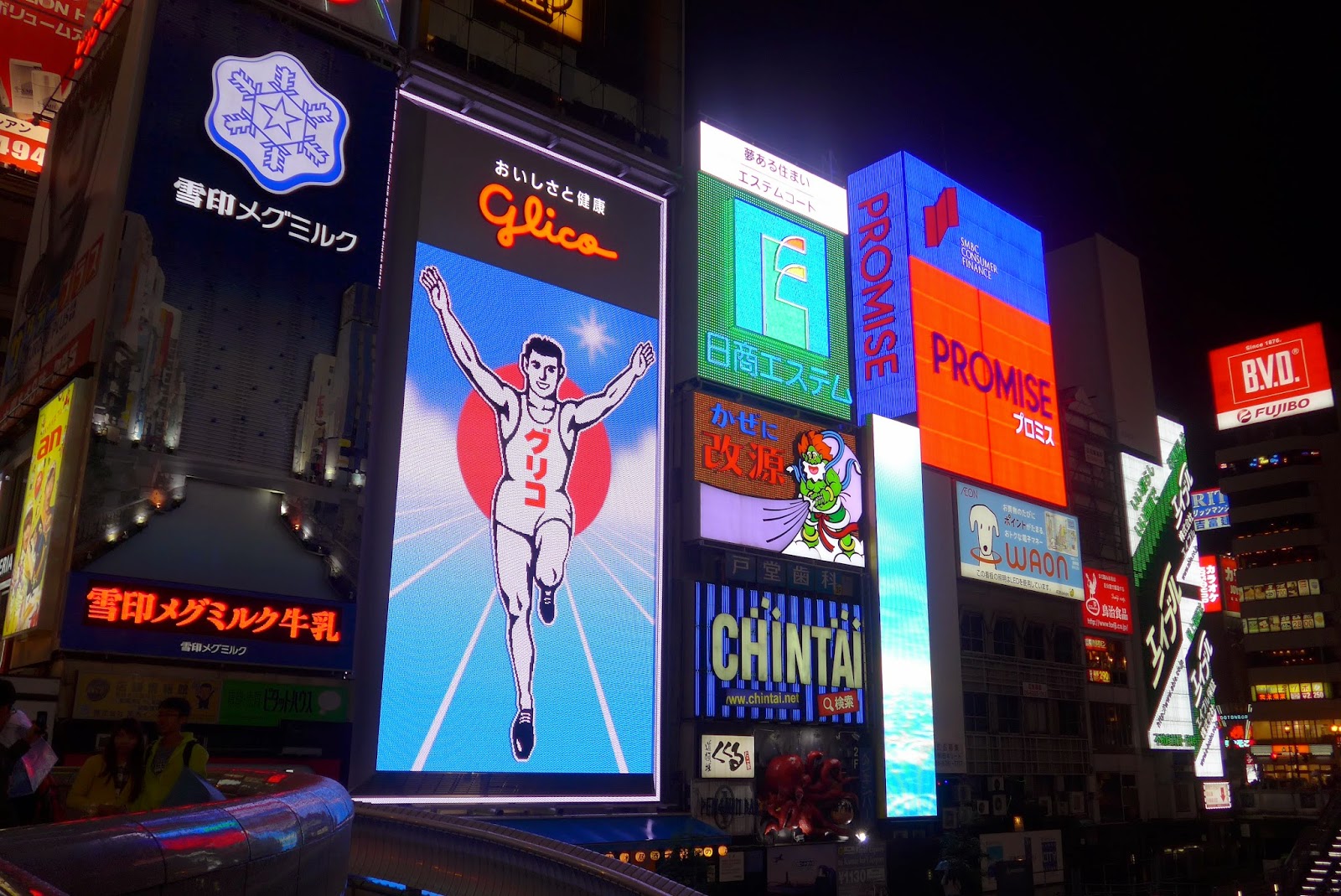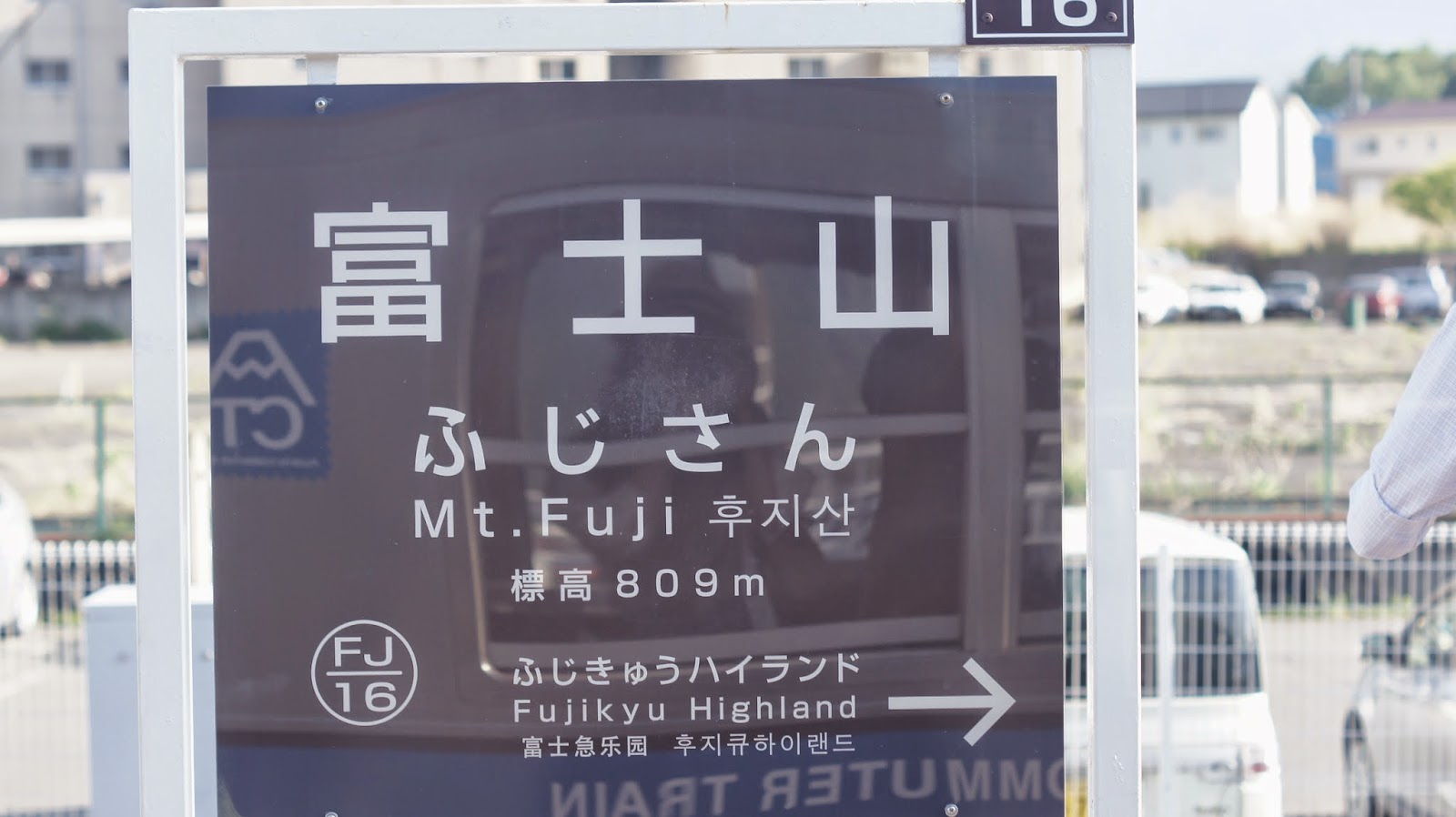7 Days in Japan Travel Blog
Sunday, July 05, 2015It's a lot cheaper to travel to Japan nowadays with the help of budget airlines. I got my return tickets to Tokyo for slightly less than $300. So my week in Japan began on the 10th May. We missed the sakura season by a week so it was kind of a disappointment.
It was a packed week and we tried to cover quite a few places, but I felt it was just nice and we managed to cover most of the places we wanted to.
Before the trip we ordered our Japan Rail Pass online and got it delivered over. It is highly recommended if you're planning to take the shinkansen, which we did. The Japan Rail Pass covers some of the shinkansen lines and the JR lines in Japan.
After the 10 hours flight (with a layover in Taipei), we finally reached Narita Airport. We were starving so we quickly went to the train station to get our Narita express tickets (which the Japan Rail Pass covers) and some onigiri before boarding the train. The train frequency is approximately half an hour but there are certain hours with limited trains.
The Narita express ride took approximately an hour to get to Tokyo. There are a few stops in Tokyo, including Shinjuku.
Tokyo
We stopped at Shibuya because I wanted to see the famous Shibuya crossing. We got off the wrong exit though, so we were lost for a bit in Shibuya. But we managed to find a conveyor belt sushi place selling each plate at only 100yen (118 yen inclusive of tax) What a steal! We were hesitant initially because there weren't any gaijin but once they know we are not Japanese, they brought us a menu.
The guy beside us was really friendly and even though he couldn't communicate in Japanese, he gestured to us to get ourselves a cup of green tea and a plate of soy sauce. The chefs are in the middle of the place and basically you just tell what you want to the chefs and they'll slice up some sushi for you immediately. Or you can be like us and just take things off the belt because we were too shy to order directly.
Our bill was only 1,500 yen for two satisfied and full tummies. We left the place feeling over the moon with our first meal in Japan. And we decided to ask an elderly policeman for directions to the crossing. Apparently saying words like "Shibuya" and "Yuumei" (有名) doesn't get us the directions to the famous crossing. But he was being really helpful and told us the directions to where he thought we were going, in JAPANESE. Thank goodness we understood Japanese.

So we crossed a few overhead bridges, and walked for a distance till we finally reached the Hachiko statue (which was where the famous crossing was). Nothing special, in my opinion. There are other junctions in Tokyo that have the same diagonal crossing. If you want to go there, exit from the Hachiko Exit.

But I guess a photo at the crossing is always a must. We walked back and forth for about 6 times before returning back onto the JR line. Our next stop was Meiji Shrine, which was at Harajuku, which was one stop away from Shibuya, on the Yamanote Line (the line which most tourists will take because it covers all the famous spots in Japan).


Takeshita Street sits directly outside the Harajuku JR station and if you walk down to your right, you'll be able to find Meiji Shrine. Or you can just follow the crowd blindly because everyone will be going to the same place.

The walk in to reach the shrine is pretty deep and it's a nice walk away from the bustling Tokyo city life. The road is kind of dusty though, and our shoes were covered in thick layers of dust.
I noticed the Japanese always turn towards the shrine and bow whenever they pass a Torii gate, both when they are entering and exiting, and of course, I followed suit without understanding why.
Before entering the shrines in Japan, there will be this cleansing area. You are encouraged to cleanse and purify yourself before entering but then again, nobody can fault you for not doing so because you're a gaijin.

Instructions will be given (if you're at a tourist area).
1. Scoop some water with right hand and rinse your left hand.
2. Switch over to the left hand and rinse your right hand.
3. Switch back to the right hand and pour some water into your left hand. Use it to cleanse your mouth.
4. Tilt the scoop upwards and let the water flow down the handle to clean the handle.


Another point to note is that there are weddings held at the shrine on Sundays so you'll get a glimpse of them in their wedding costumes.
After the trip to Meiji Shrine, we made our way to Takeshita Street which is where youths gather. There, you can find a really big Daiso store.
Our airbnb host was the kindest. The rooms were cheap and well furnished so no complaints there. Moreover, when our host found out that we wanted to go down to Omoide Yokocho for dinner, he walked us there. We had ramen and then yakitori over at Omoide Yokocho. It was definitely cheap, but not the best we had in Japan so far.
We walked around Shinjuku and spent quite a fair bit of time at the arcade before heading back to our apartment. The next day, a morning visit to Tsukiji Fish Market, where you can find the freshest sashimi.

Afterwhich, we split up and I went to Odaiba while my companion went to Ikebukuro. The reason why I went over to Odaiba was because I wanted to visit the Fuji TV building.

I've watched Japanese dramas since I was young and I've always wanted to look at the props, the studio, and the TV station. If you're not a huge fan of the Japanese dramas, you can skip this place. In the tour around the building, I saw some props from VS Arashi, SMAPxSMAP, and even Domoto Kyoudai which had ended. I even saw the studio used for recording Hey! Hey! Hey! so it was all cool.

Odaiba also offers a clear view of the Rainbow Bridge. It looks a lot better at night though. Also, I did a fair bit of shopping while at Odaiba because there were just so many shops and stores there. I left the place before lunch and headed to Hamamatsucho station to visit the Tokyo Tower!
Along the way, I spotted a standing soba store and decided to give the experience a try. The Japanese are always short on time, rushing off for work so the fastest way to finish a meal is to stand and eat. The food was really good, I guess you just can't find bad Japanese food there.


The Tokyo Tower can be seen from the Zojoji. It was a long walk from the JR station. Didn't pay to go up though. On the side note, we also did see the Skytree from afar on our first day in Tokyo.



Special mention for the Tsukemen Ramen we had because I've never had tsukemen ramen before. Why can't we find these in Singapore? It makes more sense to eat this in a hot weather as compared to bowl of hot ramen!

To catch the shinkansen to Osaka, we went to Shinagawa station because it was less confusing and was recommended to us by a staff. As the journey was 3-4 hours long, we grabbed some snacks at Shinagawa station.


There's something amazing about Kobe Croquette. Especially the kani one. I even went back on my last day to get it again. If you happen to come across it, don't forget to get one! It's a bit on the pricey side but it's definitely worth it.
Osaka
The shinkansen brings you straight to Shin Osaka station, and you can easily hop onto the JR line from there. There are two main city centers in Osaka, Umeda (which is further up north) and Namba (south of Umeda).We chose to stay at Umeda station because it was more convenient for us. We picked Hotel Kinki which was really affordable, and had really good ratings. Moreover, it was within walking distance to Umeda station, easily accessible by the underground path, and there are plenty of food choices around the area.

Hotel Kinki is located in a tiny little road, away from the main road. It took us a while to figure out where it was because when we arrived at night, this street was filled with pubs. Still, it was a safe location. I would definitely return to stay in the hotel on my next visit (next summer?)
Did I mention the 24hour Don Quijote store is right across the road from the hotel? And you wouldn't have to squeeze with all the tourists in the outlet in Tokyo Shinjuku. Ippudo ramen is also just across the street, which we had on our last day in Osaka.

We had Osaka's famous okonomiyaki and yakisoba on our first night. Don't leave Osaka without trying these - and takoyaki too!
We had an early night after some kirin beer as we recharged for our Kyoto day trip the next day.
Kyoto
Kyoto, the most beautiful city in Japan. Did you know Kyoto was taken out from the list of cities to drop the atomic bomb in WWII? A city, rich in culture. However, it's also very expensive to stay in Kyoto, a lot more expensive as compared to Osaka. Thus, we decided to make it into a day trip (two days would have been perfect to cover everything).At Osaka station, hop on the JR Kyoto line over to Kyoto. It's really easy and accessible. Upon arrival, we went to get the bus pass because it's a lot more accessible to travel by bus in Kyoto. Taking three bus rides would have made the all day bus pass worth it. Also, do remember to grab a bus route map from the tourist center!
The Otowa Waterfall! They said each stream represents a different benefit (but I'm sure those tourists queuing up for this doesn't know one bit why are they doing this).
There's also the famous love stone in Kiyomizudera, where you have to close your eyes and successfully walk from one to another.
After which, we returned to the bus stop where we dropped off and boarded another bus to Kawaramachi station. From there, we walked to Nishiki Market, where we had our lunch. Nishiki Market is a long stretch of road with lots of shops selling all kinds of things.
Even though we only had bits and pieces of food along the way, we were full to the brim and decided to head off to our next stop - Nijojo (Nijo Castle). We pretty much find a random bus stop (because by then we were lost) and looked for buses passing by this attraction. You'll be surprised how easy it is to travel by bus in Kyoto.
Also, something to note is that the floors make squeaky sounds whenever you step on it and this is to alert the people living there that an intruder is around. We tried our best to walk as silently, but failed miserably.
I was so disappointed in this place because it was overly crowded with tourist groups. So I couldn't snag a good photo with it. The architecture was beautiful though, but the experience of squeezing in the heat wasn't enjoyable.
After we were done with this place, we hopped on a bus and went back to Kyoto station before changing to a train to head towards Inari, which would be our last stop because it was getting dark soon.

Nara
We even saw some of them using the traffic crossing to cross the roads when the green man is on. How law-abiding can these deer get!

This has ought to be one of my favourite temples in Japan. It's really huge and majestic. I loved it so much, I decided to make a donation to help in the reconstruction of it. And in return, I got to write my blessing on a roof tile that will be used for the new roof.
And I'll have to say before my Japan trip, my life wasn't going good. But after coming back, everything has been going smoothly for me. I do hope the luck doesn't run out too quickly!
We were planned to head to Kofukuji after Todaiji but it was pouring heavily. It was hard to admire the pagoda in the rain so we decided to just find somewhere to have our lunch before heading back to Osaka.
It is off to the famous Dotonbori Canal over at Namba station. This has got to be the best shopping heaven. I absolutely loved walking through the alley. My favourite place was Book Off, a second hand shop that sells books, manga, CDs, DVDs, and many other random things. We spent nearly 2 hours in the store, just browsing and looking around before leaving the store with our bags of loots. They even sell second hand clothes and bags, which I didn't have the time to explore.
Fujikawaguchiko (Mt Fuji)
We were greeted with the sight of Fuji-san the moment we reached the place. Thank goodness for clear weather because the last time my companion was here, Fuji-san was completely covered by fog. I can't describe how majestic Fuji-san looked but it was truly amazing.
Upon arrival at our inn, we dropped by Lake Kawaguchi, which was just behind our inn.

After which, we head back to our inn for our dinner, and then soaked in the public bath for the rest of the night. I've never been in a public bath where you are required to be completely naked. We had an early night because the next day, we would be heading to Fuji Q Highland.
What's so special about Fuji Q Highland? I skipped out Disneyland/Disneysea and USJ, and chose to go to Fuji Q Highland instead. The theme park was near the base of Fuji-san, which means the majestic mountain is within sight on all the roller coasters. There are four main roller coasters in Fuji Q and each has its own Guinness World Record.
Firstly, Fujiyama is considered the King of roller coasters and held the record for the tallest roller coaster back when it first opened in 1996. Unfortunately, when we were queuing for it, it closed down for maintenance and despite being given a priority pass to take the ride when it reopened, it never did.
Dodonpa attained the title of the fastest roller coaster when it opened, but have since then lost its title. However, Dodonpa still holds the record for the fastest acceleration, till this date. We queued 60 mins for a 60 seconds ride but it was definitely worth it!
The last roller coaster on the list is probably the scariest and craziest roller coaster I've ever taken in my entire life. Eejanaika is a 4th dimension roller and previously held the record for the most number of inversions. 14 inversions in total! Half the time, I don't even know if I'm straight or upside down because not only does the track turns, the chair turns itself too.
Besides the roller coasters, Fuji Q Highland is also famous for the haunted house (known as the longest haunted house) and there are also plenty of other rides. Definitely a place for thrill seekers!
After a day in Fuji Q Highland, screaming our lungs out, we head back to Tokyo.








































9 comments
Hi, I am going on my first solo trip to Osaka and would like to know more about the hotel in Osaka. Is the hotel area safe for a single female traveler? I read that its a red light district area so am a little concerned. Thanks!
ReplyDeleteHi Anna! The hotel area is perfectly safe. I never had any problems even when I'm coming back late at night. Have fun on your trip!
DeleteHi! Does the JR pass cover Narita Express and the JR Yamanote line? Thanks!
ReplyDeleteHi Shirley! Yes the JR pass covers the Narita Express and the all the JR lines (including JR Yamanote). Just remember to head to the office to get the Narita Express ticket! :)
DeleteNice photos! Enjoy reading your blog!
ReplyDeleteThank you, glad you enjoyed it :)
DeleteThis comment has been removed by the author.
ReplyDeleteThank you! Hope you enjoyed my blog content!
ReplyDeleteGreat post! Do check out our post covering our Japan Travel Itinerary as well!
ReplyDeleteHappy Travels Everyone!
Tom & Kate,
2bearbear.com